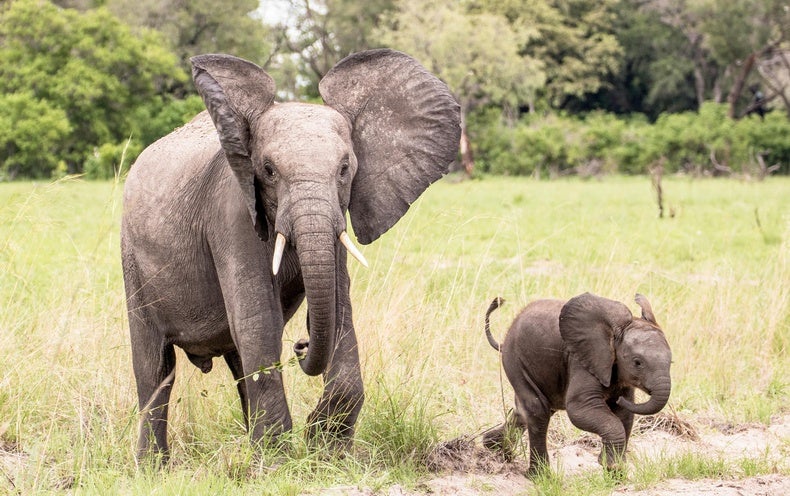
The First ‘Google Translate’ for Elephants Debuts
When a male African savanna elephant folds his ears while simultaneously waving them, he’s ready for a fight. When a female folds her ears and accompanies the action with an ear flap, that means she’s also issuing a serious threat. But when elephants come together and fold their ears while also rapidly flapping them, the animals are expressing a warm, affiliative greeting that is part of their bonding ceremonies.
Elephants possess an incredibly rich repertoire of communication techniques, including hundreds of calls and gestures that convey specific meanings and can change depending on the context. Different elephant populations also exhibit culturally learned behaviors unique to their specific group. Elephant behaviors are so complex, in fact, that even scientists may struggle to keep up with them all. Now, to get the animals and researchers on the same page, a renowned biologist who has been studying endangered savanna elephants for nearly 50 years has co-developed a digital elephant ethogram, a repository of everything known about their behavior and communication.
“Without a multimedia approach, I see it as impossible to properly show and explain the behavior of a species, and we hope this will inspire other scientists to take a similar approach for other species,” says Joyce Poole, co-founder and scientific director of ElephantVoices, a nonprofit science and conservation organization, and co-creator of the new ethogram. “At a time when biodiversity is plummeting and the lives of elephants are being heavily impacted by humans, we also want to spell out to the world what we stand to lose.”




















